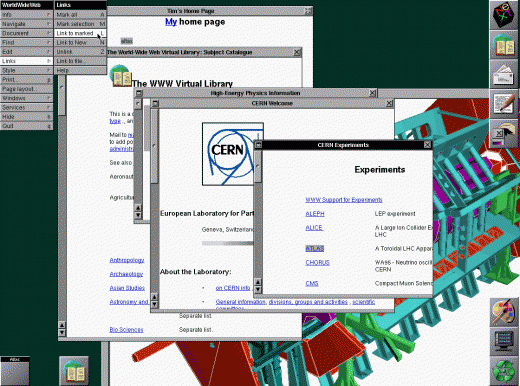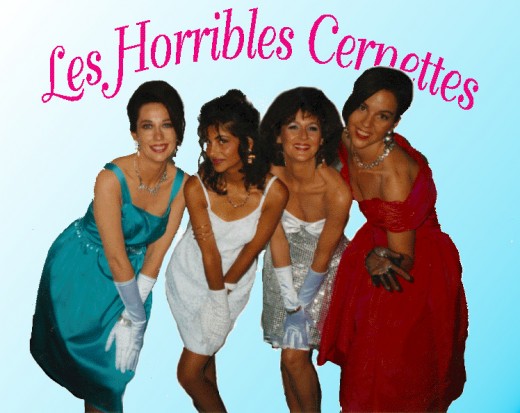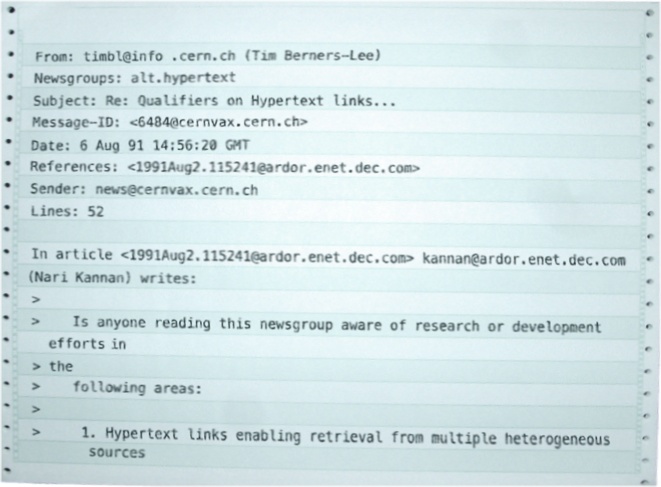Back to the Web and more positive history; while at CERN, Berners-Lee had been researching a better method for physicists to share information, without having the same hardware and software.
HyperText is a way to link and access information of various kinds as a web of nodes in which the user can browse at will. Potentially, HyperText provides a single user-interface to many large classes of stored information such as reports, notes, data-bases, computer documentation and on-line systems help. We propose the implementation of a simple scheme to incorporate several different servers of machine-stored information already available at CERN, including an analysis of the requirements for information access needs by experiments.
I had a BBS back then. It was pretty insular. He called it HyperText, and it became what you now see as HTTP:// in your web browser.
Here is his alt.hypertext posting, courtesy of Google:
The WWW project merges the techniques of information retrieval and hypertext to make an easy but powerful global information system.The first browser ran on the NeXTStep operating system:
The project started with the philosophy that much academic information should be freely available to anyone. It aims to allow information sharing within internationally dispersed teams, and the dissemination of information by support groups.

This is the first image posted to the Web, in 1992:


Yes, it is French parodic rock group Les Horribles Cernettes
By 1995, I had not only my own newsgroup but my own webpage which, in a precursor to blogging, was pretty much just about me. It was basically a castle and an area outside the castle and by clicking on it you went to new sections where there were pictures, thoughts, downloads, etc.

Being free was instrumental in its success and it's one of the reasons why I think as time goes on we want to have all studies available for free, just like Berners-Lee wanted even then - not just pay-to-to-publish but free all the way around. Baby steps.
Thanks, World Wide Web, for being 50% of the reason Science 2.0 is possible (the other half being people willing to read and write science this way) - enjoy the next 20 years.


Comments